
The truth of suffering or dissatisfaction, inherent in human existence.
The truth of the cessation of suffering, the possibility of liberation from suffering.
The truth of the path leading to the cessation of suffering, the Eightfold Path.
The truth of the origin of suffering usually attributed to attachment and desires.
Buddhism is one of the oldest and most followed religions in the world. It originated some 2,500 years back in ancient India and is now being followed by more than 350 million people around the world. It was founded by Siddhartha Gautama around the 5th century BC, who is commonly known as the Buddha (meaning "enlightened one"). The teachings of Buddhism center around the four noble truths and the eightfold path, which serve as the fundamental principles guiding Buddhist practice and understanding.
As taught by Gautama Buddha, the four noble truths form the basis of Buddhism. These truths acknowledge pain as an ever present part of life where happiness and pleasure come in fleeting moments. They are a reminder that suffering in life is constant and does not exist without cause. The four noble truths are as follows:
The last of the four noble truths gives rise to the eightfold path. By embracing the noble eightfold path or the AriyaAtthangikaMagga, one can be freed from the suffering caused by the material world by attaining nirvana, or liberation from the cycle of rebirth. This path encourages one to explore a middle-way, between the extremes of never-ending pleasure and asceticism, and are as follows:
We offer Buddhist tour packages and travel itineraries that are meticulously designed for individuals and groups who wish to explore and experience the various pilgrimage sites of Buddhism. It includes important Buddhist sites and pilgrimage destinations in India, Bhutan, Nepal, and Sri Lanka. Our Buddhist tour packages are tailored to cater the specific interests of Buddhist travelers or those who want to understand Buddhism better. Our packages give you an opportunity to immerse yourself in the history, culture, and spirituality of Buddhism. These tour packages can be customized to suit individual and group requirements.
Buddhism begins with prince Siddhartha, who before taking up the spiritual path led a lavish and royal life, a life void of sadness. It was later that he discovered the reality of human suffering, leading him to the path of self-discovery and in search of answers that would help relieve sadness from this world.
After years of isolating himself from society, he attained enlightenment sitting under a Bodhi Tree, at Bodh Gaya. What he gained from being enlightened, he decided to share with the world, which today form the core principles of Buddhism.
It was during his lifetime that Buddhism spread in the Indian subcontinent, which was spread further due to the work of his disciples. Their work led the religion to take roots, not only in the countries of India, and Nepal, but also to countries such as Sri Lanka, Tibet, and even as far as to Southeast, Central, and East Asia.
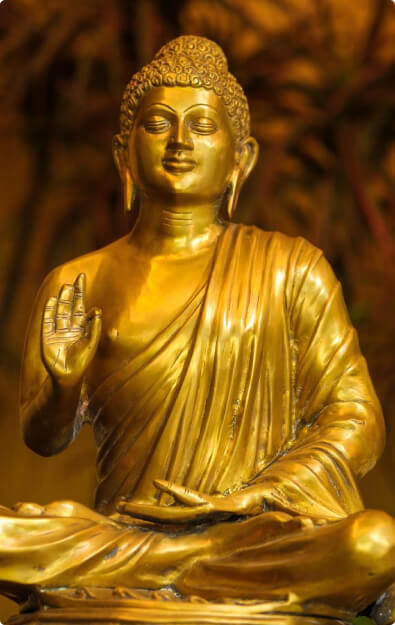
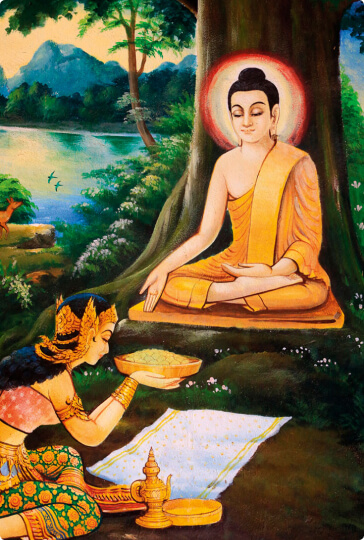
Journey of Buddhism can be seen as the journey of Gautam Siddartha. He was the one who nurtured and propagated Buddhism and its principles during his lifetime. Siddhartha was born into a warrior clan and led a lavish life until the age of 29 when he, for the first time witnessed the sufferings of the world in the form of old-age, illness, and death. This then led him to venture out across Nepal and India in search of answers for these sufferings. After isolating himself from society, the Buddha chose to spend his days fasting and meditating. As a result of which, he attained enlightenment under the Bodhi tree and decided to spread his learnings to help others.
He acquired disciples along the way which made it possible for the dissemination of his teachings into what Buddhism is known to be today. After his death, efforts of Emperor Asoka of the Mauryan Empire led Buddhism to flourish in India and Sri Lanka, later spreading to Thailand, and other Southeast Asian countries. Thanks to the silk route, Buddhism spread further into Tibet, Mongolia, China, Korea and Japan through the regions of Afghanistan and Kashmir, and stands to be one of the major religions of the world today.
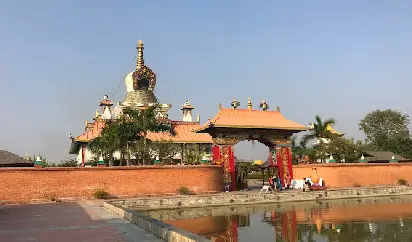
Place where Siddharth Gautam (Buddha) was born in the 6th century BCE, now part of modern-day Nepal. He was born into a royal family, as the son of King Suddhodana and Queen Maya.
Read More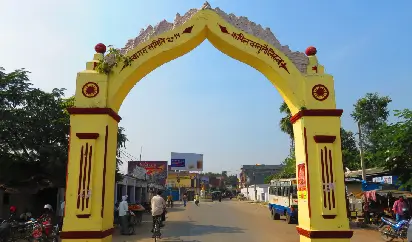
The Buddha spent the first 29 years of his life in Kapilvastu. It is here that he spent his childhood and married life before renouncing it all to seek the truth.
Read More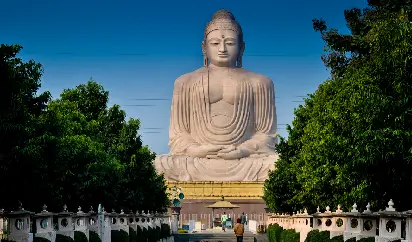
Bodhgaya holds immense significance in Buddhism for events that took place over 2,500 years ago. It is the place where Siddhartha Gautama, attained enlightenment and became the Buddha, the "Awakened One."
Read More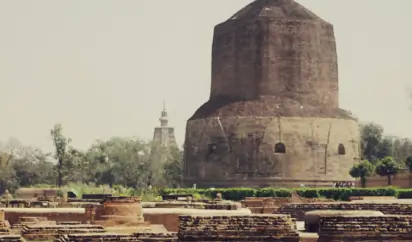
Sarnath is the place where the Buddha delivered his first sermon, often referred to as "Setting the Wheel of Dharma in Motion,” which laid out the foundational teachings of Buddhism.
Read More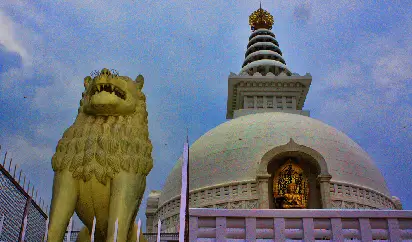
Rajgir, located in the state of Bihar, is the place where the Buddha gave many important discourses, teachings and is a site of several important sutras, including the Heart Sutra.
Read More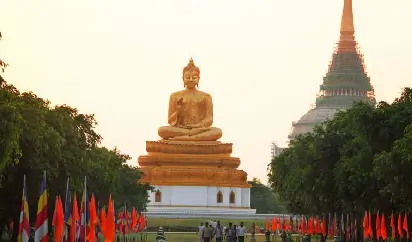
Shravasti is significant as a major city of the Buddha's time, and its association with crucial events and teachings, making it a symbol of Buddhism’s early history and spread in ancient India.
Read More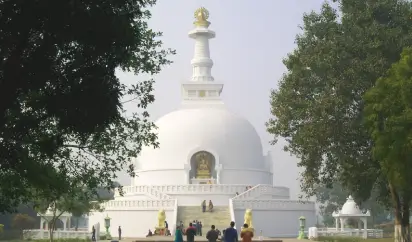
Vaishali is where the Buddha chose to announce his impending Mahaparinirvana or final passing away from the world, and to offer final instructions and advice to his disciples.
Read More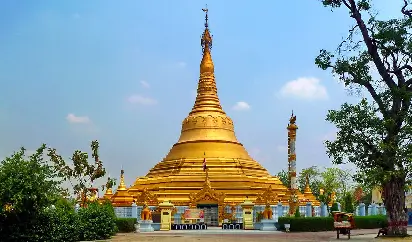
Kushinagara is the place where the Buddha breathed his last and attained Mahaparinirvana at the age of 80 years. Nearing his death, he laid down in the middle of Sal trees and passed away.
Read More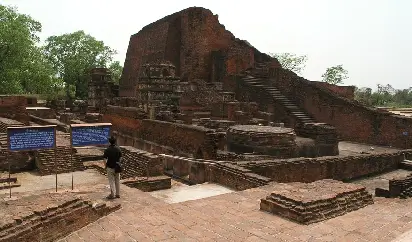
Nalanda houses the Nalanda Mahavihara, an ancient university and monastic complex that existed from the 5th century CE to the 12th century CE and was a major center for scholars and students of Buddhism.
Read MoreWe offer Buddhist tour packages and travel itineraries that are meticulously designed for individuals and groups who wish to explore and experience the various pilgrimage sites of Buddhism. It includes important Buddhist sites and pilgrimage destinations in India, Bhutan, Nepal, and Sri Lanka. Our Buddhist tour packages are tailored to cater the specific interests of Buddhist travelers or those who want to understand Buddhism better. Our packages give you an opportunity to immerse yourself in the history, culture, and spirituality of Buddhism. These tour packages can be customized to suit individual and group requirements.
Forming an integral part of the cultural and spiritual practices of Buddhists, these teaching centers welcome both, the followers as well as those interested in the learning of the religion. These centers of learning have existed since centuries, helping to spread the practices and philosophies that form the basis of Buddhism. These centers also function as places of prayer, worship, and meditation as well.
Important Buddhist monasteries and centers of teaching in India include:
The Mahabodhi Temple at Bodh Gaya is a significant pilgrimage site of worship for the followers of Buddhism and is visited by the Buddha's devotees from India and abroad, since it was here, under the Bodhi tree that he attained enlightenment. A UNESCO World Heritage Site, the temple complex also holds importance for being the first temple to have been built by Emperor Asoka during his reign.
Located at Kushinagar, the Mahaparinirvana Temple is an important temple of Buddhist tourism in India. The temple houses a statue of the reclining Buddha that is 6 meters long, and is carved out of a single block of sandstone. The temple also has the Ramabhar Stupa in its vicinity, the site where the Buddha was cremated after his death.
The Sanchi Stupa at Madhya Pradesh is another Buddhist pilgrimage site that is listed under UNESCO's World Heritage Sites. An architectural beauty, the stupa is a fascinating example of early Buddhist architecture and is known for its exquisite carvings depicting the Buddha's life and highlighting important events through various symbols, a prominent feature of the time.
Sankisa is said to be the place where the Buddha descended from heaven after giving sermons to his deceased mother in the afterlife during the Varsha Vaas. It was here that later Emperor Ashoka would erect an elephant capital, which today remains ruined without a trunk. Temples dedicated to the Buddha and his mother Maya Devi can also be found at Sankisa.
Constructed in 427 CE, Nalanda houses the Nalanda Mahavihara, once a prominent site for Buddhist learning that attracted scholars from all over Asia. The University taught medicine, maths, and concepts of Buddhism. Although the site today remains ruined due to the test of time, it once contained 9 million handwritten books that imparted knowledge about Buddhism.
The Diamond Triangle of Odisha includes 3 important Buddhist sites namely, Udayagiri, Lalitgiri, and Ratnagiri, which were once prominent centers of learning for the Vajrayana and Mahayana sect of Buddhism that housed monasteries, deities, and votive stupas within them. Ratnagiri is most known for its 2 storeyed monastery, and gateways containing elaborate carvings.
Located in Himachal Pradesh, the Namgyal Monastery is the residence of the 14th Dalai Lama and one of the larger Tibetan places of worship. The monastery is an important center of learning for the monks who wish to learn about the rituals and traditions of tantric Buddhism and is an important travel destination for the followers of Buddhism and those interested in the practice.
The Tawang Monastery in Arunachal Pradesh is situated at a height of more than 9,000 ft. and is considered the oldest and the second largest monastery in Asia. A fascinating destination to include on your Buddhist tour, the monastery's main prayer hall contains a number of ancient scriptures, statues, and artifacts that are of interest to the devotees.
This important Buddhist monastery lies along the banks of the Indus River, in the union territory of Ladakh. Apart from the main monastery, the Hemis Monastery also has a museum that displays various Buddhist thangkas, artifacts, books, and manuscripts. The monastery, surrounded by the hills of Ladakh, creates a serene atmosphere that is perfect for meditation and prayers.
India, one of the pivotal centers for Buddhism, is a place where Buddhism originated and has a rich historical presence. In India several Buddhist festivals are celebrated at various Buddhist sites. These festivals give an opportunity to devotees from all over the world to engage with Buddhist teachings, cultural performances and experience the vibrant spirit of Buddhist communities in India.
Below are some of the important Buddhist festivals celebrated in India:
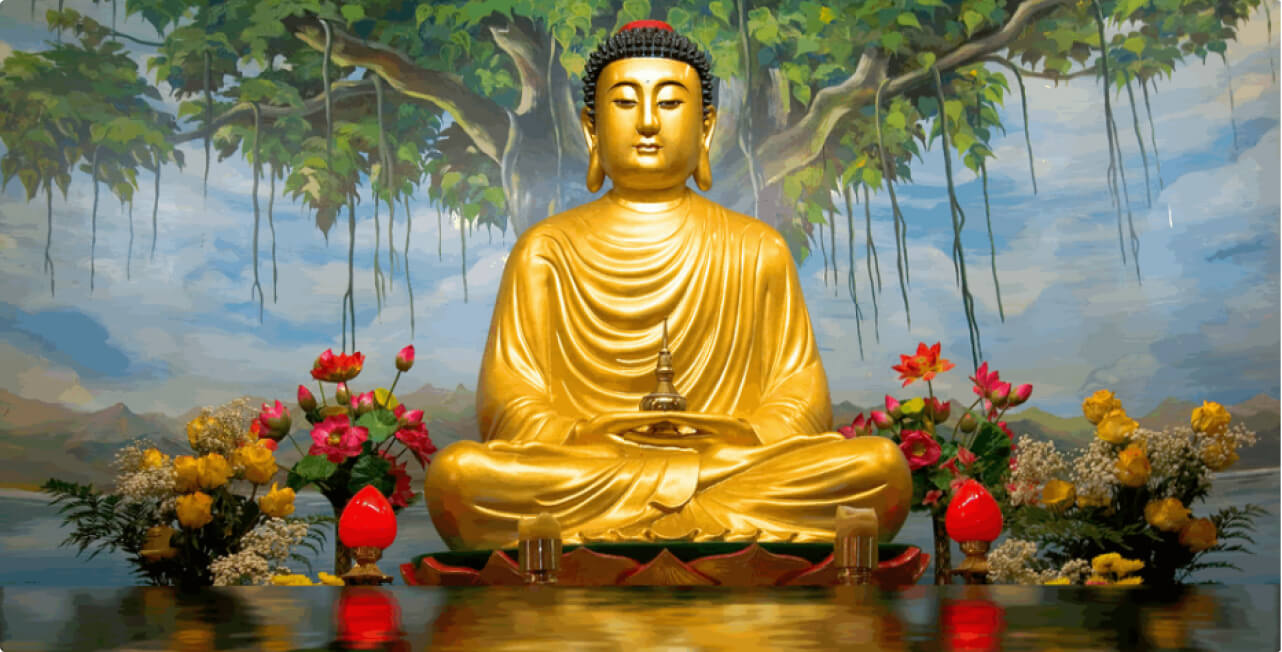
The festival of Buddha Purnima or Vesak is an important festival for the followers of Buddhism and marks the birth, enlightenment and death of Gautama Buddha. A major festival for the devotees, Buddha Purnima is celebrated on the full moon day in the lunar month of Vaisakh, and can vary according to the lunar calendars of the respective countries. The day is honored by chanting of prayers, meditating, and attending sermons at different Buddhist places of worship.

Celebrated on the first full moon day of the lunar month of Magha, the Magha Puja reveres the Sangha or the Buddhist community. The day is celebrated to remember the 1,250 enlightened monks, ordained by Buddha, who gathered one day to listen to his sermon on a whim, and were given the Patimokkha or the rules for a monastic life. A lesser known festival in the east, it is celebrated with fervor in the west.

The Asalha Puja is celebrated to commemorate Buddha's first ever sermon that he gave after attaining enlightenment. It is an important day for Buddhists as without this sermon, the knowledge of Buddha would lie undiscovered to humankind. The Asalha Puja takes place on the first full moon day in the eighth month of the lunar calendar and marks the beginning of the Varsha Vaas or the monsoons during which the monks avoid travel.

The first Kalachakra Festival was held in 1954 by the 14th Dalai Lama in Tibet, and is one of the biggest Buddhist festivals, attended by hordes of people annually. Organized in Bodh Gaya, the festival is a 10 day affair and is associated with the Kalachakra or the wheel of time which categorizes time under an alternative cycle, inner cycle, and the outer cycle, a better understanding of which can lead one to attain enlightenment.

Losar is celebrated by the Tibetan Buddhists welcoming the New Year and takes place in the first month according to the Tibetan calendar. The festival is mainly celebrated in the states of Sikkim, Arunachal Pradesh, Ladakh, and the region of the Himalayas. During the festivities, people visit Buddhist temples and seek blessings from spiritual leaders, spend time with family and friends, and offer prayers to spirits, and guardian deities for a prosperous new year.

The Hemis Festival is celebrated by the Hemis Monastery of Leh and takes place on the birth anniversary of Guru Padmasambhava, an important Buddhist spiritual leader of Tibetan Buddhism. The main attraction of this 2 day festival is the Chham Dance that is performed by the monks of the monastery. The dance is performed wearing colorful masks and showcases an act about the victory of good over evil.

LhababDuchen commemorates the day when the Buddha descended from heaven after giving sermons to his deceased mother and the gods of the Trayastrimsa heaven during the Varsha Vaas. According to the Tibetan calendar, the festival is celebrated on the 22nd day of the ninth lunar month and is an important day since karmic results of anything done on this day will be multiplied a thousand-fold.

This festival is celebrated by Buddhists of Sikkim in honor of Guru Padmasambhava for his contribution in spreading Tantric Buddhism throughout the Himalayan region during the 8th century. The celebration is held at the Rumtek monastery with a performance of the KagyedChaam by the monks, depicting scenes from Buddhist mythology and stories of the Guru.
Gautam Siddhartha, founder of Buddhism had many important disciples, who played important roles in spreading Buddhism and its teachings to other parts of the world. Here are a few of his notable disciples:
Among the chief disciples of Buddha, Sariputra learned the Abhidharma or the basic teachings of Buddhism directly from him, which he then passed on to the rest of the followers of Buddha and proved to be a major cornerstone in the spread of Buddhism further. An ardent follower of Buddha, he attained enlightenment shortly after becoming a monk and working under him.
Along with Sariputra, Maudgalyayana is also considered to be among the top two disciples of Buddha due to his wisdom and psychic powers. Friends since childhood, both of them together entered into a life of asceticism, but eventually parted ways in search of someone who could guide them. Later due to Sariputra, Maudgalyayana found Buddha and became a disciple. After just a week of being ordained under Buddha, Maudgalyayana attained enlightenment.
Mahakasyapa is also known as the 'Father of the Sangha', since after Buddha's death it was under his guidance that the teachings of Buddha were compiled and taught. Born into a Brahmin family, he had always wanted to live life as an ascetic, but could not do so due to his parents. It was years later that he took to leading a religious life. Adored by Buddha, he was one of his most cherished disciples.
Subhuti was another one of Buddha's cherished disciples. He stood out from the crowd with his ability to understand emptiness and the ability to detach from the material pleasures of the world. Humble to the core, his only wish was to spread the teachings of the Buddha no matter the consequences, which he proved to Buddha himself when asking his permission to do so.
Considered a great preacher by the Buddha, Purna or Punna helped spread the teachings of Buddhism to many people. His compassion and belief in Buddha led people to join the sangha. It did not take him long to become one of Buddha's chief disciples after being ordained as a monk. Immersed in his responsibility to spread Buddha's learnings, he worked hard in his mission to do so.
Katyayana was a disciple of Buddha who was considered the best when it came to discourses. Born into a brahmin family, he was a learned man and had knowledge of grammar, mathematics, and the vedas. Being knowledgeable, he was able to understand the parables of Buddha with ease.
Anuradha or Anirudhha was Buddha's disciple as well as his cousin, who joined the Sangha. On being reprimanded by Buddha for sleeping during one of his sermons, Anuradha vowed to never sleep again, which eventually led him to lose his vision. Later, he was taught the power of the divine eye by Buddha through which he could see the various realms of the universe.
Upali, before becoming a disciple of Buddha, was a barber and met Buddha when he was cutting his hair. Belonging to a lower caste, he was, at first, hesitant to ask Buddha to join the Sangha, but he did. Upali flourished as a monk and went on to become one of Buddha's chief disciples.
Rahula was the only son of Buddha, who chose to follow his father's footsteps into the world of Buddhism and became one of his chief disciples. He became a monk at a relatively young age and attained enlightenment when he was just 18 years of age. Even though Rahula was his son, Buddha never once favored him over the others, and treated him equally.
Ananda, a chief disciple of the Buddha, was also his cousin. He was known for his sharp memory that helped him to remember the teachings of Buddha. He was chosen to be Buddha's attendant due to his integrity and character, which he fulfilled perfectly. Ananda served him for over 25 years until Buddha passed away at the age of 80 at Kushinagar.
Buddhism is a religion, practice and way of life that deals with the concept of nonviolence, kindness, and an art of living that focuses on minimizing pain and acknowledging its existence in the world. Not opting for complete asceticism, Buddhism focuses on finding a middle ground between worldly life and isolation.
Buddhism and its principles were founded by Siddhartha Gautama who is also referred to as the Buddha.
The teachings of Buddhism center around the four noble truths and the eightfold path, which serve as the fundamental principles guiding Buddhist practice and understanding.
The four noble truths are as follows:
The last of the four noble truths gives rise to the eightfold path and are as follows: